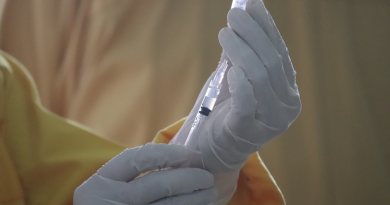Diabetes in children
Diabetes of any type can occur in children and adolescents. Regardless of what type of diabetes a child has, an expert at Baylor College of Medicine suggests focusing on a healthy and active lifestyle as a family.
While the term juvenile diabetes used to be the term for children who developed type 1 diabetes as a child, doctors are retiring this definition since both type 1 and type 2 diabetes can present in children.
 “There is a genetic component in both types of diabetes,” said Dr. Siripoom McKay, assistant professor of pediatrics – diabetes and endocrinology at Baylor. “Type 1 and type 2 diabetes have different genes that contribute to the risk of diabetes.”
“There is a genetic component in both types of diabetes,” said Dr. Siripoom McKay, assistant professor of pediatrics – diabetes and endocrinology at Baylor. “Type 1 and type 2 diabetes have different genes that contribute to the risk of diabetes.”
Some cases of pediatric diabetes also include monogenic diabetes, in which a change in one gene causes a child to have the condition. Some children can develop diabetes in infancy, while some develop it during their childhood. Symptoms for all types of diabetes are due to high glucose, and they appear if glucose levels are persistently above 180. Symptoms of high glucoses include:
- Urinating more often than usual
- Urinating at night: a child who has outgrown wetting the bed suddenly starts bedwetting again
- Weight loss: glucose going in the urine means loss of calories, which can lead to weight loss
Type 1 diabetes
Type 1 diabetes is a disease of absolute insulin deficiency, or the body has such a small amount of it that it is unable to utilize glucose for energy. The only option is to make more insulin, so patients receive insulin shots.
Lack of insulin can lead to diabetic ketoacidosis. This means the body cannot use the glucose appropriately for energy, so it starts breaking down fat that creates ketones, resulting in a drop in the body’s pH levels. The drop in pH can lead to the need for ICU care.
Type 2 diabetes
With type 2 diabetes, patients have a relative lack of insulin with additional components of insulin resistance. The body makes insulin, but it does not produce enough to control glucose.
“You have high glucose because the body isn’t producing enough. The insulin concentration in the blood is present in type 2 diabetes and it’s often high, but it requires higher levels of insulin to keep the glucose under control,” McKay said.
If you have a family history of type 2 diabetes, try to not put on extra weight and be active. Obesity increases the risk of type 2 diabetes, and weight control and physical activity help keep blood sugars in the normal range.
Medication for type 2 diabetes targets decreasing insulin resistance (making the body’s own insulin work better) or increasing insulin, including insulin shots.
While there are no food restrictions for children with diabetes, some patients may dose insulin based on grams of carbohydrates they consume. Carbohydrates cause glucose to increase. In a person without diabetes, the body responds by making more insulin to bring the glucose back to normal. If you can’t increase insulin, then you need insulin injections at meals. This does not restrict the patient’s carb intake any more than what is recommended for healthy people.
McKay recommends following a healthy, active lifestyle as a family. Children with diabetes do not need to follow a special diet but participate in a lifestyle that benefits the whole family. She also emphasizes that children with diabetes should not deprive themselves when it comes to celebrations with birthday cakes and treats – just avoid indulging in sweets every day, which she recommends all people follow.
“Teach children by example that eating healthy foods and staying physically active are integral parts of life,” McKay said.
-By Homa Shalchi



